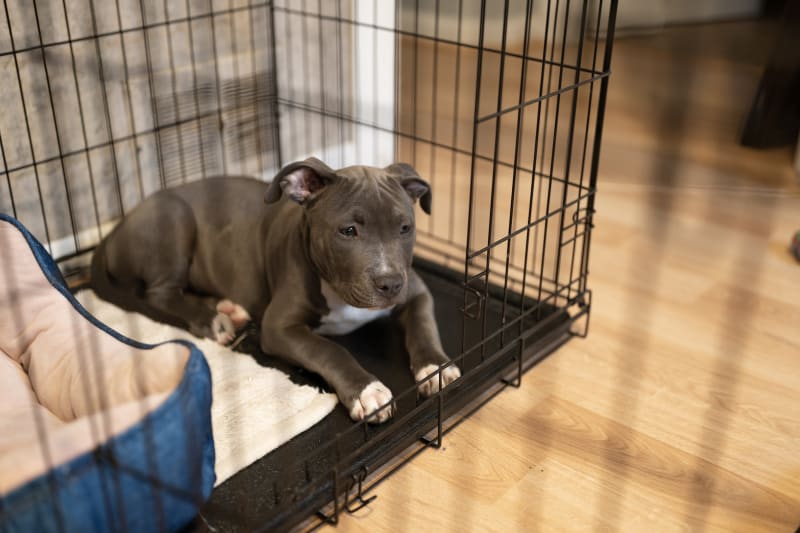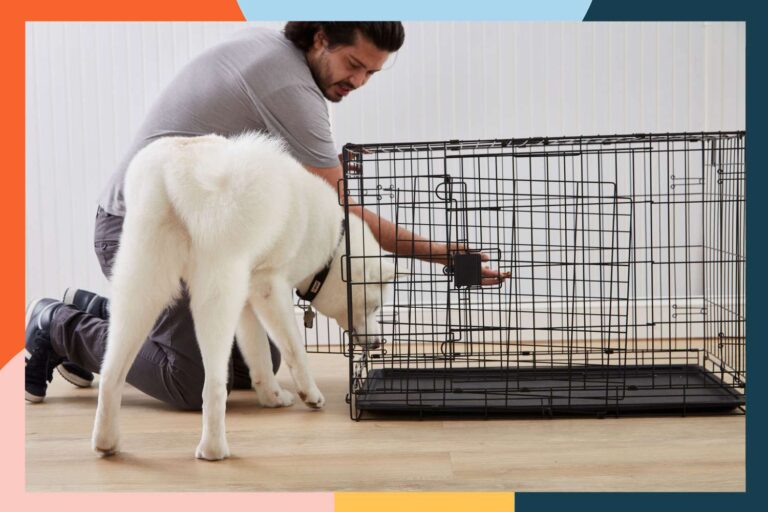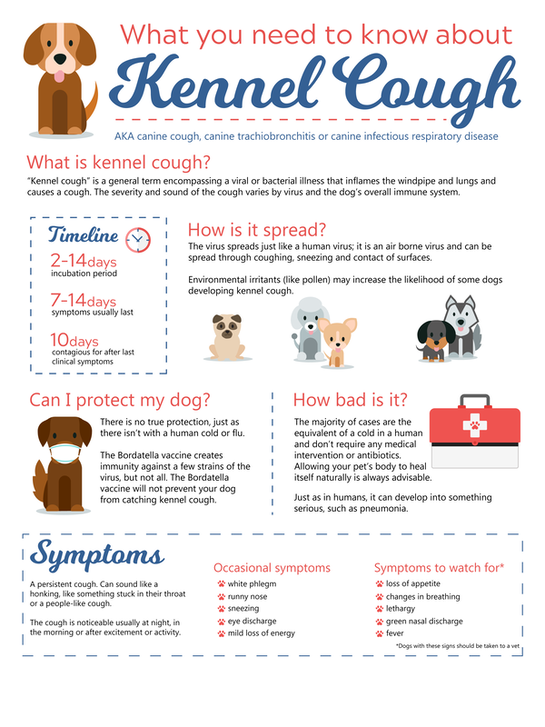What to Do If Puppy Cries: Crate Training Tips
Last Updated on May 8, 2024 by Petpalace54
To comfort your crying puppy in the crate, try providing a comfortable environment that mimics their natural sleeping area & give them toys or treats to occupy themselves. Puppies tend to cry in their crates, especially when they are new to it or during their separation anxiety phase.
However, it is important to address this behavior to avoid making it a habit, which can lead to excessive barking and frustration. When a puppy cries in a crate, it can be a sign of discomfort or anxiety. Thus, it is important to make the crate as comfortable and inviting as possible.
What to Do If Puppy Cries or Crate Training Tips? Yes, there are several ways to do this, including providing a soft blanket, placing the crate in a quiet area, & giving toys or treats to keep them occupied. Luckily, this valuable article provides tips and tricks for managing a crying puppy in a crate.
Table of Contents
Understanding Puppy Crying
What to Do If Puppy Cries? One common issue that new puppy owners often face is their puppy crying in the crate. This can be a distressing experience for both the puppy and the owner, especially if they are not sure of what to do in such a situation. The key to addressing this problem is first to understand why puppies cry in crates, and then take steps to address the underlying issue.
Reasons Why Puppies Cry
| Reasons Why Puppies Cry | Solutions to Help |
| Separation Anxiety | Comfort the puppy with a blanket, toy, or crate cover to help them feel secure. Gradual crate training can also help to reduce separation anxiety. |
| Need to Eliminate | Make sure the puppy has emptied their bladder and bowels before being crated. Schedule regular potty breaks and gradually increase the time they spend in the crate to help them adjust. |
| Hunger or Thirst | Make sure the puppy is well-fed and hydrated before being crated, and provide water if applicable. Consider feeding earlier in the evening so the puppy has adequate time to digest their food. |
Importance Of Addressing Puppy Crying
It’s important to address puppy crying in the crate because it can lead to long-term behavioral issues. Ignoring a crying puppy may also lead to increased anxiety, which can exacerbate the problem. Additionally, prolonged crying can cause physical harm to the puppy, such as throat irritation or exhaustion.
- Understanding why your puppy is crying is the first step in addressing the issue.
- Be patient with your puppy, & gradually increase the time they spend in the crate.
- Provide comfort items & make the crate a positive experience for your puppy.
- Consult with a trainer or veterinarian if the crying persists or is accompanied by other behavioral issues.
However, by following these tips and being patient with your puppy, you can help them adjust to their crate and reduce or eliminate crying behavior in the long-term.
Crate Training Basics
Crate training is a vital aspect of keeping your puppy safe and providing a designated private space. If your puppy cries in the crate, do not panic, try to calmly soothe them to sleep and gradually increase the time they spend inside the crate.
Crate training is an essential part of every puppy’s life. But, it’s not always easy, especially if your puppy cries in the crate. Don’t worry; it’s a common problem, and you’re not alone. Now, we’ll cover the crate training basics to help your puppy love their crate & stop crying.
What Is Crate Training?
Crate training is the process of teaching your puppy to feel comfortable in their crate. It’s a useful tool that helps with potty training, keeps your puppy safe, and provides a secure place for them to relax. The crate should be a positive and happy environment for your puppy. The crate should never be used as punishment for bad behavior.
Benefits Of Crate Training
There are many benefits to crate training, including:
- Helps with potty training
- Reduces destructive behavior
- Keeps your puppy safe
- Provides a secure place for your puppy to relax
- Helps with travel & vet visits
Choosing The Right Crate
Choosing the right crate for your puppy is crucial. The crate should be big enough for your puppy to stand, turn around, and lie down comfortably. It’s essential to choose a crate that your puppy can grow into, but is not too big that they can use one side as a bathroom and the other side to sleep. Consider the material, size, and features of the crate before making your purchase.
Introducing The Crate To Your Puppy
Introducing the crate to your puppy should be a gradual process. Start by placing the crate in a quiet area of your home and leave the crate door open to allow your puppy to explore. Place treats, toys, and a comfortable blanket or bed inside the crate to make it a positive experience. Once your puppy is comfortable being inside the crate, close the door for a few seconds to a few minutes and slowly increase the time.
How Long Should A Puppy Stay In The Crate?
A puppy should not be left in their crate for more than a few hours at a time. Puppies have small bladders & need to go out frequently to potty. The general rule of thumb is a puppy can hold their bladder for one hour per month of age. For example, a four-month-old puppy can hold their bladder for up to four hours. Never leave a puppy in their crate for more than eight hours a day.
In conclusion, crate training is an essential part of puppy ownership but can be challenging at times. With patience and consistency, your puppy will learn to love their crate and stop crying. Remember to choose the right crate, introduce it gradually, & never leave your puppy in their crate for too long. By following these simple steps, you’ll set your puppy up for a lifetime of success.
What To Do If Your Puppy Cries In The Crate
If your puppy cries in the crate, it’s important to understand the reasons behind their behavior. You can try making the crate more comfortable, giving them plenty of exercise & playtime beforehand, and using positive reinforcement techniques to help them feel more secure in their new surroundings.
If you’re a new puppy owner, you might be facing the challenge of crate training your furry friend. Crate training is an essential part of a puppy’s routine, as it teaches them how to behave when left alone and keeps them safe when you’re not watching them. However, it’s not uncommon for your puppy to cry or whine when you place them in the crate. Don’t panic, as this is normal behavior, and there are many things you can do to help your puppy feel comfortable in the crate.
Do Not Punish Your Puppy
One of the most important things to keep in mind when your puppy cries in the crate is not to punish them. Your puppy is crying because they’re anxious and scared, & punishing them will only worsen the situation. You need to show patience and understanding, as it takes time for your puppy to adjust to the new surroundings. Instead of punishing them, you need to identify the reason behind their crying & address it accordingly.
Troubleshooting Your Crate Training
If your puppy is crying in the crate, there could be many reasons why they’re feeling uncomfortable. Here are some troubleshooting tips that could help you solve the issue:
- Make sure that the crate is the right size for your puppy.
- Place the crate in a quiet & peaceful area of your home.
- Add some comfortable bedding & toys to the crate.
- Gradually increase the amount of time your puppy spends in the crate.
- Avoid leaving your puppy in the crate for too long.
Remember, crate training your puppy takes time and patience. Don’t rush the process, and don’t give up too easily. With consistent training & lots of love and care, your puppy will soon learn to enjoy spending time in their crate.

Credit: m.youtube.com
Additional Tips For Successful Crate Training
If your puppy cries in their crate during crate training, there are a few things you can try. Don’t immediately let them out of the crate, as this will reinforce their crying behavior. Instead, make sure they are comfortable & have everything they need, such as toys and a comfortable bed.
Gradually increase the length of time they spend in the crate and offer positive reinforcement when they are quiet.
If your puppy is crying in the crate, it could be a frustrating experience for both you and your furry friend. However, it’s important to stick to a consistent approach when it comes to crate training. Here are some additional tips to make sure your puppy is comfortable in the crate:
Create A Positive Association With The Crate
The first step to successful crate training is to create a positive association with the crate. The crate should be a comfortable and safe space for your puppy to retreat to when they need some alone time. Make sure to introduce the crate gradually and give your puppy time to explore it. Place their favorite toys, blankets, & treats inside the crate to make it more inviting.
Use Treats And Toys To Entice Your Puppy
Using treats and toys to entice your puppy into the crate can encourage positive behavior. Try placing a treat or toy in the crate and when your puppy goes inside, praise them & give them a pat. This will help establish a positive association between the crate and positive reinforcement.
Establish A Consistent Routine
Establishing a consistent routine is key to successful crate training. Make sure your puppy has plenty of opportunities to go outside to relieve themselves and stick to a regular feeding schedule. This will help your puppy stay on track with their potty training & also prevent them from feeling anxious or stressed.
Be Patient & Persistent
Crate training can take time and requires patience and persistence. Don’t get discouraged if your puppy is crying in the crate, try to remain calm & reassure your puppy that everything is okay. Using positive reinforcement and sticking to a consistent routine will help your puppy feel more comfortable and confident in their crate.
With these additional tips and a positive attitude, you can successfully train your puppy to love their crate and feel at home in it!
Alternatives To Crate Training
If you’ve been trying to crate train your puppy but they just won’t stop crying, don’t worry. There are alternatives that you can try to ensure your puppy is safe and comfortable, even when they’re not by your side. Let’s dive into two common alternatives to crate training.
Puppy Playpen
A puppy playpen is a great alternative to crate training, especially if you want your puppy to have more space to move around. With a playpen, your puppy can play, sleep, eat, and do anything they want without feeling confined. Plus, it will also reduce the separation anxiety that your puppy might feel if they’re left alone in a crate.
Make sure the playpen is big enough for your puppy to move around and has a sleeping area, food and water bowls, and some toys. You can also use pee pads in the playpen if you’re still potty training your pup.
Puppy-proofed Room
If you want your puppy to have even more space than a playpen, you can set up a puppy-proofed room for them. This is a safe and secure space where your puppy can roam freely & play without any danger.
Before making the room ready for your pup, make sure you puppy-proof it. Ensure that there are no loose electrical cords, poisonous plants, sharp objects, or any other hazards that your pup might get into. Cover the electrical outlets with covers and remove any items that your pup can chew on.
You can leave food and water bowls, a bed, a few toys, and pee pads in the room. Make sure it has enough light and air circulation. You can also keep your pup’s crate in the room as a safe and familiar space for them.
In Conclusion,
Crate training can be very effective in many cases, but it’s not always the best fit for every puppy. Thus, consider these alternatives if your puppy continues to cry in a crate & monitor their behavior to ensure they feel safe and comfortable.

Credit: www.dunnellonanimalhospital.com
Credit: www.quora.com
Frequently Asked Questions On What To Do If Puppy Cries In Crate
How Do I Get My Puppy To Stop Crying In His Crate?
To stop your puppy from crying in the crate, ensure the crate is the appropriate size, add comfortable bedding and toys for your puppy, establish a consistent routine, give your puppy plenty of exercises and mental stimulation, & gradually acclimate your puppy to being alone in the crate.
Should I Let My Puppy Cry It Out?
No, as a responsible puppy owner, you should not let your puppy cry it out. Consistent and positive attention & reinforcement are key to building trust with your puppy and creating a happy and healthy bond. Avoid leaving your puppy alone for extended periods of time and provide comfort & reassurance as needed.
Should I Ignore My Puppy Crying At Night?
No, you should not ignore your puppy crying at night. Crying is a way for them to communicate their needs, so it is important to identify why they are crying and address their needs accordingly. Whether it’s making sure they have water, taking them out to the bathroom, or providing comfort, responding to their cries will build trust & establish a good relationship between you and your puppy.
Does Putting A Blanket Over A Dog Crate Help?
Yes, putting a blanket over a dog crate can help provide a sense of security and comfort for dogs. It can also help block out excess light & noise, creating a cozy and calming environment. However, it’s important to make sure the blanket is not too thick or hot, as dogs need proper ventilation and airflow in their crate.
Conclusion
Overall, What to Do If Puppy Cries & Crate Training Tips is an essential aspect of a puppy’s behavior development. Crying in the crate can be distressing for both the puppy and the owner. It is essential to understand the reasons for crying and use positive reinforcement techniques to help the puppy learn to love its crate.
Remember that puppies are learning constantly, & with the right tools and techniques, a little patience, and persistence, your puppy can learn to enjoy being in its crate. With some consistency and training, your puppy will eventually learn to love its little den.






